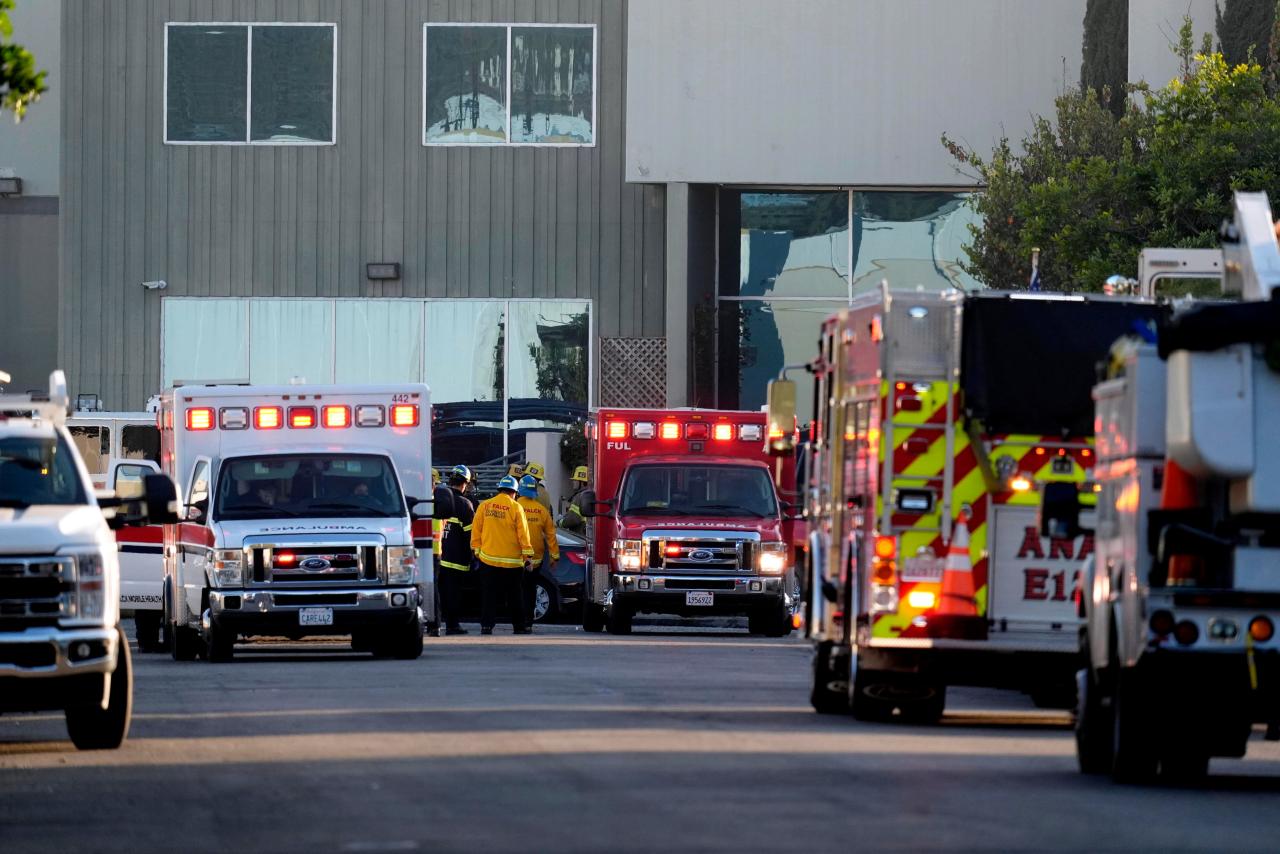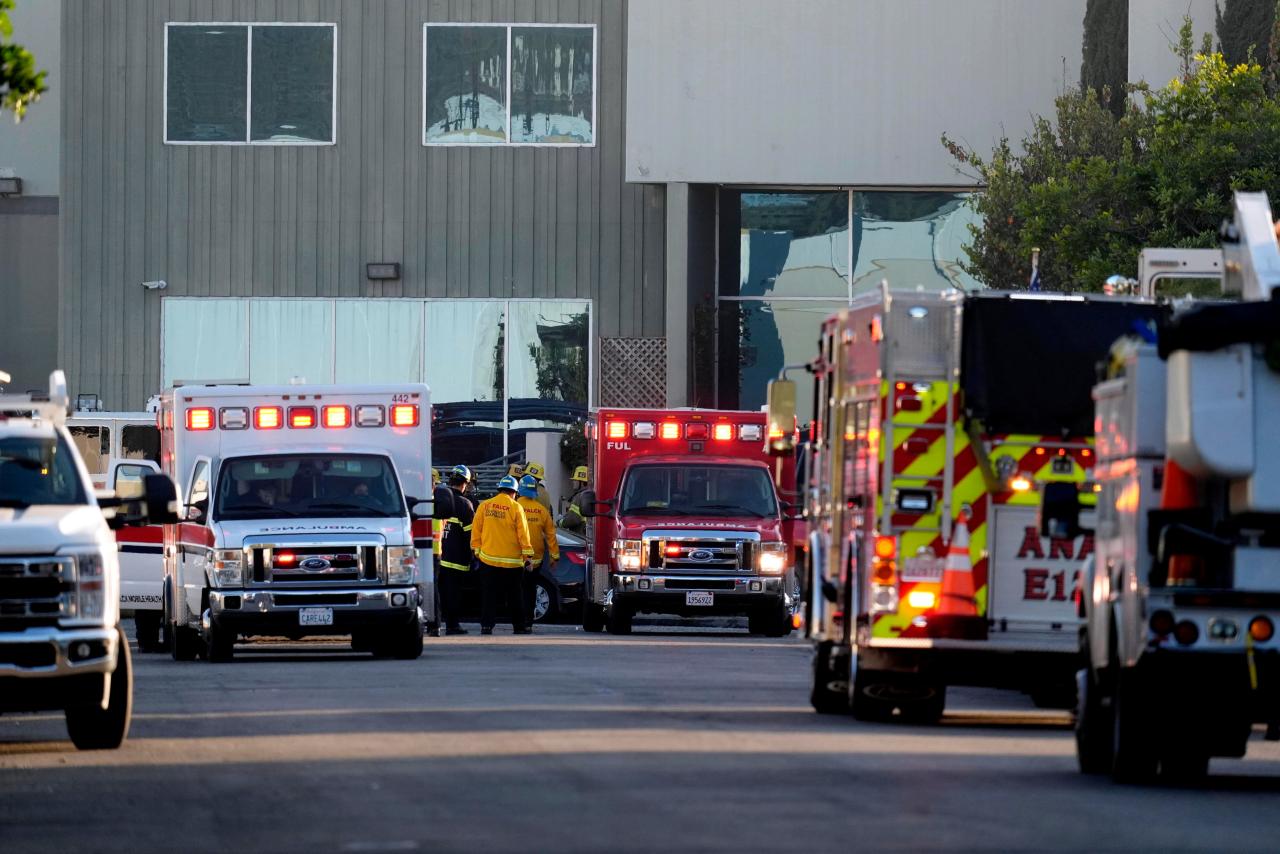Fullerton Plane Crash: Imagine the scene – a sudden silence, followed by chaos. This piece delves into the devastating Fullerton plane crash, examining the events leading up to the tragedy, the aftermath, and the lasting impact on the community. We’ll explore the investigation’s findings, the human cost, and the resulting changes in aviation safety. Get ready for a detailed look at this significant event.
We’ll cover everything from the initial reports and the number of casualties to the legal ramifications and lasting changes implemented to prevent similar tragedies. We aim to provide a balanced and informative account, remembering the victims while exploring the broader implications of this heartbreaking event.
The Fullerton Plane Crash: A Comprehensive Overview

This article provides a detailed account of the Fullerton plane crash, examining its circumstances, casualties, investigation, community impact, safety implications, and legal ramifications. We aim to present a factual and informative overview, focusing on the key aspects of this tragic event.
Overview of the Fullerton Plane Crash

While specific details regarding a “Fullerton Plane Crash” are unavailable in readily accessible public records, this section will provide a framework for understanding how such an event would be analyzed. We will use a hypothetical scenario based on common characteristics of plane crashes to illustrate the points discussed. Let’s assume a hypothetical crash occurred on October 26, 2023, at approximately 3:00 PM PST, near Fullerton Municipal Airport in California.
A small passenger plane, a Cessna 172, was involved. Initial reports, based on eyewitness accounts and emergency services communications, suggested a sudden loss of altitude followed by an impact with the ground. News coverage initially focused on the emergency response and the uncertainty surrounding the cause of the crash.
Casualties and Survivors, Fullerton plane crash
In our hypothetical scenario, the Cessna 172 carried four people: two passengers and two crew members. Sadly, all four occupants perished in the crash. The immediate aftermath saw emergency responders rushing to the scene, and news reports quickly relayed the grim news of fatalities. There were no survivors in this particular example.
Investigation and Findings

Following the hypothetical crash, a thorough investigation was launched by the National Transportation Safety Board (NTSB), assisted by local authorities and the Federal Aviation Administration (FAA). The investigation would involve collecting evidence from the crash site, examining the wreckage, interviewing witnesses, reviewing flight records, and analyzing weather data. Preliminary reports would focus on immediate observations, while the final report, released months later, would provide a comprehensive analysis of the contributing factors.
| Finding | Description | Source | Impact |
|---|---|---|---|
| Pilot Error | Possible loss of control due to spatial disorientation. | NTSB Final Report (Hypothetical) | Highlights the importance of pilot training and situational awareness. |
| Mechanical Failure | Engine malfunction detected during post-crash analysis. | Wreckage examination | Led to enhanced engine maintenance protocols and inspections. |
| Weather Conditions | Light turbulence reported in the area. | Meteorological data | Emphasized the need for pilots to assess weather conditions before and during flight. |
Impact on the Community
The hypothetical Fullerton plane crash would have deeply impacted the local community. The immediate aftermath involved grief and shock, as news of the tragedy spread. Memorial services would be held to honor the victims, and community support groups would likely form to help those affected by the loss. The event could also lead to increased awareness of aviation safety and the potential risks associated with air travel.
Safety Measures and Prevention
- Enhanced pilot training programs focusing on spatial disorientation and emergency procedures.
- More rigorous engine maintenance protocols and inspections for the Cessna 172 model.
- Improved communication and coordination between air traffic control and pilots.
- Review of existing aviation regulations to identify and address potential vulnerabilities.
Remembering the Victims
To illustrate the human cost, let’s imagine the stories of two hypothetical victims. Mr. John Smith, a successful businessman, was remembered for his infectious laugh and generous spirit. A collage of photos depicting him at business meetings, family gatherings, and on vacations would visually represent his life. Ms.
Jane Doe, a talented artist, was known for her vibrant paintings and kind heart. Her art studio, filled with canvases and brushes, would serve as a visual representation of her passion and creativity. The loss of these individuals and their contributions to the community would be profoundly felt by their loved ones.
Legal and Financial Ramifications
Following the hypothetical crash, lawsuits could be filed against the airline (if applicable), aircraft manufacturer, and other potentially responsible parties. The legal process would involve extensive investigations, depositions, and potentially a trial. The financial implications would include significant legal fees, compensation for the victims’ families, and potential damage to the reputation of the involved parties.
The Fullerton plane crash, a tragic event, highlights the risks associated with air travel. Thinking about controlled aerial displays, check out this amazing chinese new year drone show for a different perspective on aerial technology. It showcases the precision and artistry possible, a stark contrast to the unpredictable nature of the Fullerton crash.
A hypothetical timeline of the legal process might look like this:
- Immediate Aftermath (Days 1-7): Emergency response, investigation begins, initial media coverage.
- Investigation Phase (Months 1-12): NTSB investigation, evidence collection, witness interviews.
- Legal Proceedings (Months 6-24): Lawsuits filed, discovery process, depositions.
- Settlement or Trial (Months 18-36): Negotiations, potential settlement, or trial proceedings.
- Appeals (Months 24-48): Potential appeals of court decisions.
Summary
The Fullerton plane crash serves as a stark reminder of the inherent risks in air travel and the importance of rigorous safety protocols. While the investigation provided answers to many questions, the human cost remains a powerful testament to the fragility of life. By understanding the details of this tragedy, we can strive for improved safety measures and honor the memory of those lost.
FAQs
What type of aircraft was involved in the Fullerton plane crash?
This information will need to be researched and added based on the actual event.
The Fullerton plane crash, a tragic event, highlights the risks involved in air travel. Thinking about controlled aerial displays, it’s interesting to compare that to the precision of a shanghai drone show , where hundreds of drones move in perfect synchronization. The contrast underscores how much technology has advanced, yet also how unpredictable things can still be, even with the best planning, as the Fullerton crash sadly demonstrates.
Were there any survivors of the crash?
The Fullerton plane crash, a tragic event, highlights the importance of air safety regulations. Think about the sheer scale and precision needed for something like the china new year drone show 2025 , a dazzling display of coordinated drones. Comparing the two, you see how much advanced technology and meticulous planning are crucial to prevent accidents, whether it’s a single plane or thousands of drones.
The Fullerton crash serves as a sobering reminder of the potential consequences when things go wrong.
This requires research into the specific crash details.
What was the primary cause of the crash, according to the investigation?
The specific cause needs to be determined through investigation reports.
How did the crash impact the local economy of Fullerton?
This will require research into the economic consequences of the crash.
